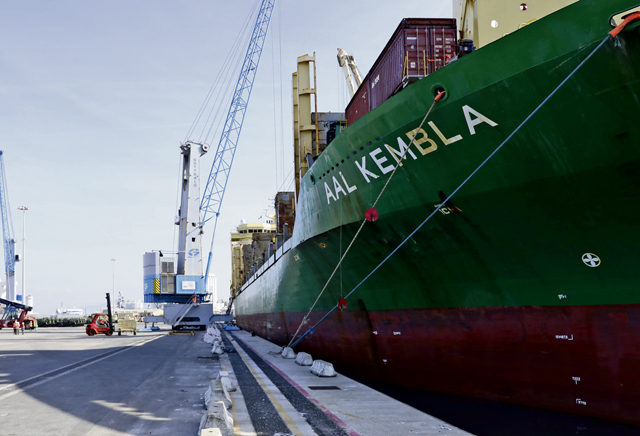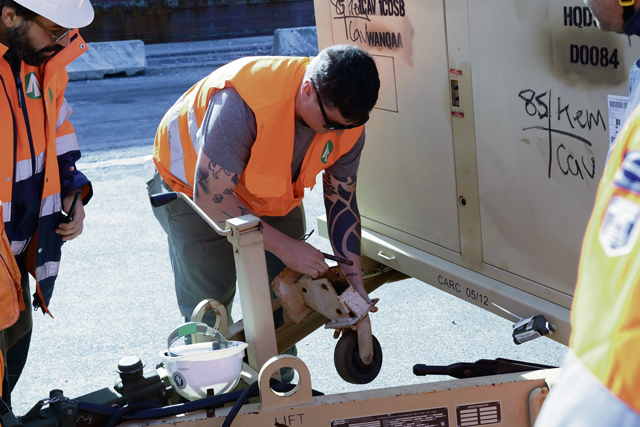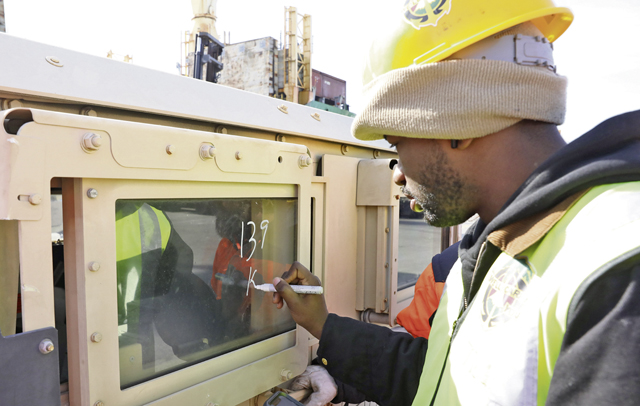
LIVORNO, Italy – The Port of Livorno hosted multiple U.S. Army units that came together to conduct the reception, staging, and onward movement of the 1st Cavalry Division, Division Sustainment Battalion on March 24. The 39th Transportation Battalion, 16th Sustainment Brigade, 21st Theater Sustainment Command and 598th Transportation Brigade (Surface Deployment and Distribution Command), 839th Transportation Battalion, with the assistance of 1st Calvary Divion’s Port Support Activity, the Italian Armed Forces, and Livorno Port authorities, facilitated the movement of more than 400 pieces of equipment from the port to multiple forward operating sites across Europe.
Lt. Col. Mike Harrell, commander, 839th Trans BN, who had overall responsibility for the port operation, praised his team’s efforts and their role in the overall strategic picture.
“These types of operations are very important for us to accomplish not only our national strategic objectives by projecting large-scale combat forces for large combat operations, but also to show our allies our commitment,” said Harrell.
This operation marks the second time this fiscal year that the Port of Livorno has been utilized to bring U.S. military equipment into Italy en route to forward locations across Europe in support of NATO’s deterrence efforts.
Operations officer Capt. Kevin Conley, 839th Trans BN, ensured a safe and efficient operation. He emphasized the importance of this type of mission with our Italian allies. “This mission increases our interoperability with our host nation partners because the more we use this port, the more they invest in us.” said Conley. “It’s a mutual investment. This will eventually increase our power projection capabilities moving forward.”
According to Conley, interoperability was key to the operation’s success. Every entity involved had a crucial role to play and even the most minute detail was tied to the overall mission success.
This was especially evident to 1st Lt. Izabella Maia, 386th Movement Control Team officer in charge. She stressed how closely she worked with the port stevedores and the Italian supporting entities at Camp Darby, Italy, to account for, and track every piece of equipment coming off the vessel through in-transit visibility until it reaches is final destination in Europe.
The ultimate aim of this type of operation is for the incoming regionally aligned force to become as fully mission-capable, as fast as possible. Maj. Samuel Johnson, the sustainment brigade S4 for the 1st Cavalry Division Sustainment Brigade, in charge of the Brigade Port Support Activity, deployed ahead of the main force to oversee and proactively manage his unit’s equipment coming off the vessel.
“The PSA part of this operation is a unit-supplied set of unit movement officers, maintainers, and medics that will come to the port to make sure that our equipment, as it gets off the vessel, is not only identified and confirmed it made the trip okay, but we can also identify maintenance issues,” said Johnson. “So we can identify what we’ll need to do in order to build combat power as we establish our areas of operations.”
Port operations in Livorno demonstrated the need for a combined effort from multiple entities, at multiple echelons, to ensure that the incoming forces get wherever they need to be ready to fight.
“Working with our theater sustainment partners such as the 21st TSC, the 386th MCT, 16th Sustainment Brigade, and all of our partners in the theater has been excellent,” said Conley. “We’ve always had a great working relationship supporting one another in order to accomplish the mission.”





